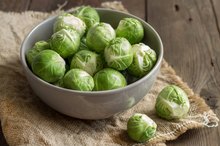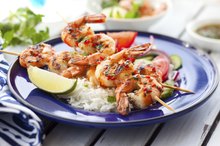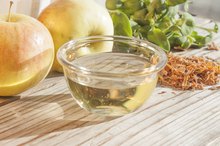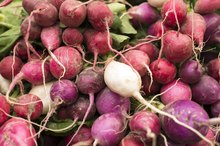Foods to Treat Bursitis
The human body has hundreds of bursa located between the bones and soft tissue, like tendons, muscles or ligaments. These small, fluid-filled, slippery sacs are responsible for reducing friction between the soft tissue and bones in the elbows, knees, hips, shoulders and ankles. When these sacs get overused or strained from repetitive stress, they can become inflamed and be quite painful in a particular joint, resulting in bursitis. If caught early, home treatment can be successful and eating certain foods can help alleviate the inflammation and repair the damaged cells.
Orange Juice
Certain fruits like oranges and grapefruit are high in vitamin C, which helps damaged cells and tissues, like those found in bursitis, regenerate and repair themselves. A diet deficient in vitamin C can also lead to a weak bursa, making it more prone to inflammation and infection.
Pineapple and Papaya
Strawberries for Gout
Learn More
Pineapple is rich in bromelain and papayas contain papain. Both ingredients can reduce inflammation caused by bursitis. They can be eaten whole or juiced to get this benefit.
Broccoli, Spinach and Bananas
Broccoli, spinach and bananas are rich in vitamin B complex, including riboflavin, niacin and thiamine, which help treat bursitis. These nutrients repair damaged cells and regenerate healthy ones. They also help prevent infection of the damaged cells caused by bursitis.
Avocadoes and Tomatoes
Alkaline Diet to Treat Gout
Learn More
Foods like avocadoes and tomatoes are rich in vitamin E, an antioxidant that destroys free radicals in the body. Free radicals are toxins that cause cell damage. Increasing your intake of vitamin E foods will help fight damage caused by bursitis.
Omega-3
Omega-3 fatty acids are found in fish oil and flaxseed oil. This compound decreases inflammation caused by bursitis and develops strong, healthy tissues instead. You can find omega-3 in supplements, salmon, walnuts and olive oil.
Related Articles
References
- All Natural Health
- Cleveland Clinic. Bursitis. Updated January 30, 2019.
- Arthritis Foundation. Bursitis.
- Truong J, Ashurst JV. Septic bursitis. NCBI StatPearls. 2019.
- Conduah AH, Baker CL, Baker CL. Clinical management of scapulothoracic bursitis and the snapping scapula. Sports Health. 2010;2(2):147-55. doi:10.1177/1941738109338359
- Stanford Health Care. Treatment for bursitis.
- Cleveland Clinic. Bursa injection.
- Mitchell JJ, Chahla J, Vap AR, et al. Endoscopic trochanteric bursectomy and iliotibial band release for persistent trochanteric bursitis. Arthrosc Tech. 2016;5(5):e1185-e1189. doi:10.1016/j.eats.2016.07.005
- University of Rochester Medical Center. Bursitis.
- Aaron, D.; Patel, A.; Karyiaros, S. et al. Four Common Types of Bursitis: Diagnosis and Management.J Am Acad Orthop Surg June 2011;19:359-367.
- Blackwell, J.; Hay, B.; Bolt, A. et al. Olecranon bursitis: a systematic overview.Shoulder Elbow. 2014;6(3):182-90. DOI: 10.1177/1758573214532787.
- Manac'h, A.; Ha, A.; Descatha, E. et al. Prevalence of knee bursitis in the workforce. Occupational Medicine. 2012;62(8):658-60. DOI: 10.1093/occmed/kqs113.
Writer Bio
Deborah Dunham is a freelance writer with 10 years of experience writing for the health and fitness industry. Her expertise and writing focuses on running, marathons, training, nutrition and healthy living. She is an ACE-certified personal trainer and certified RRCA running coach.









